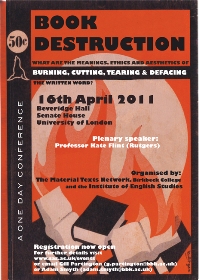 Two weeks ago I attended the Book Destruction conference, which took place on the 16th of April at the Institute of English Studies, part of the University of London. The conference focused on the book as a symbol and as an idea, as well as on its material form, and explored what happens when books are not treated with reverence but with violence or disregard. Subjects discussed were the burning and obliterating of books; cutting and tearing; recycling and remaking; and digitizing and archiving books. Underneath you can find a short summary of my notes on what I deemed the most interesting papers.
Two weeks ago I attended the Book Destruction conference, which took place on the 16th of April at the Institute of English Studies, part of the University of London. The conference focused on the book as a symbol and as an idea, as well as on its material form, and explored what happens when books are not treated with reverence but with violence or disregard. Subjects discussed were the burning and obliterating of books; cutting and tearing; recycling and remaking; and digitizing and archiving books. Underneath you can find a short summary of my notes on what I deemed the most interesting papers.
 Corinna Norrick looked in her paper at book destruction with a political background, more specifically at political children’s book publishing. The 1968 German student protests amongst others focused on a criticism of the educational system. Publishing house Rororo Rotfuchs started publishing a non-authoritarian democratic children’s books series, which aimed at demystifying the ‘good children’s book. Not only did they explore new types of content, but also new formats and new channels of distribution. Norrick shows how the toy or activity books published by Rotfuchs challenged the typical function of books: playfulness and creativity became the main aspects. Children were encouraged to cut up the books, for instance to create clothing for dolls or set up pop-up houses. Destroying books in this way served as a stimulus for the child’s creativity.
Corinna Norrick looked in her paper at book destruction with a political background, more specifically at political children’s book publishing. The 1968 German student protests amongst others focused on a criticism of the educational system. Publishing house Rororo Rotfuchs started publishing a non-authoritarian democratic children’s books series, which aimed at demystifying the ‘good children’s book. Not only did they explore new types of content, but also new formats and new channels of distribution. Norrick shows how the toy or activity books published by Rotfuchs challenged the typical function of books: playfulness and creativity became the main aspects. Children were encouraged to cut up the books, for instance to create clothing for dolls or set up pop-up houses. Destroying books in this way served as a stimulus for the child’s creativity.
 Adam Smyth from Birkbeck zoomed in on a specific kind of renaissance remix practice in his paper on cutting up bibles at Little Gidding. Smyth showed several examples of mechanical marginalia, namely scissors that left oxidation traces in folios. What were these destructive instruments doing inside books? Scissors were most likely owned by binders, but we must not forget, according to Smyth, that the act of reading in the Renaissance was often accompanied by the cutting up of books, with both scissor and knives, to create scrapbooks or commonplace books. Cutout pages were again glued in to create new books. Smyth shows how in this way reading and writing was accompanied by a third act: cutting. He explores this act of making books by cutting up books in the Renaissance by looking at the Bibles or harmonies of Little Gidding, which can be seen as radical interventions in the history of the book. Nicholas Ferrar, head of an Anglican religious community, which resided in Little Gidding, and his family created concordances or harmonies by cutting-up bibles. The intention of the bible cut-ups was to ‘harmonize’ the text. The Little Gidding’s harmonies can also be seen as early forms of collage were images were also cut-up and reworked into the narrative, adding pictorial enhancements to the textual re-shuffling. Interesting enough, Smyth explains, it was not the cutting up of texts that was challenging but exactly the use of images, where in 1630 these were seen as akin to Catholicism. This cutting out of pictures, dismantling and reordering them, can be seen as a form of iconoclasm. Boxes of images were kept and also parts of images were used. Interesting enough the actual cutting and pasting was done by Ferrar’s nieces. The effect of the harmonies as a whole is the tension between a striving for completeness vs. the cutting and pulling apart that is part of the collating. The creativity of
Adam Smyth from Birkbeck zoomed in on a specific kind of renaissance remix practice in his paper on cutting up bibles at Little Gidding. Smyth showed several examples of mechanical marginalia, namely scissors that left oxidation traces in folios. What were these destructive instruments doing inside books? Scissors were most likely owned by binders, but we must not forget, according to Smyth, that the act of reading in the Renaissance was often accompanied by the cutting up of books, with both scissor and knives, to create scrapbooks or commonplace books. Cutout pages were again glued in to create new books. Smyth shows how in this way reading and writing was accompanied by a third act: cutting. He explores this act of making books by cutting up books in the Renaissance by looking at the Bibles or harmonies of Little Gidding, which can be seen as radical interventions in the history of the book. Nicholas Ferrar, head of an Anglican religious community, which resided in Little Gidding, and his family created concordances or harmonies by cutting-up bibles. The intention of the bible cut-ups was to ‘harmonize’ the text. The Little Gidding’s harmonies can also be seen as early forms of collage were images were also cut-up and reworked into the narrative, adding pictorial enhancements to the textual re-shuffling. Interesting enough, Smyth explains, it was not the cutting up of texts that was challenging but exactly the use of images, where in 1630 these were seen as akin to Catholicism. This cutting out of pictures, dismantling and reordering them, can be seen as a form of iconoclasm. Boxes of images were kept and also parts of images were used. Interesting enough the actual cutting and pasting was done by Ferrar’s nieces. The effect of the harmonies as a whole is the tension between a striving for completeness vs. the cutting and pulling apart that is part of the collating. The creativity of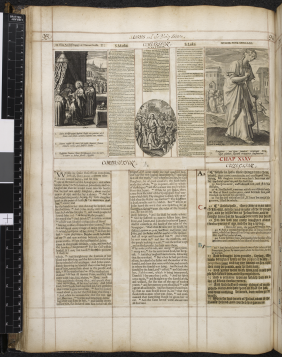 these harmonies rests on the prior act of cutting parts. Smyth shows how these harmonies are a good example of the illusion of the fixity of print. He sees this development as a response to the printing press: the scrapbooks turned the printed books back into unique pieces. As Smyth explains, there is a lot of novelty and technical sophistication in these harmony productions but they also catch a lot of unease in early readers of these books, who took them to be printed in the ordinary way. The finished book was thus not yet the iconic thing it is today; it was not yet a fully established idea. Cutting up bibles was not a regressive act, only the use of images was seen as controversial. Cutting up the text could also have served as a memory device perhaps, to aid the learning off the text, becoming more familiar with it. Smyth ends by noting how the idea of authorship is very interesting in these works where Ferrar’s nieces did the actual cutting up. So if we talk about authorship we can state that the Little Gidding texts have been reworked by many hands.
these harmonies rests on the prior act of cutting parts. Smyth shows how these harmonies are a good example of the illusion of the fixity of print. He sees this development as a response to the printing press: the scrapbooks turned the printed books back into unique pieces. As Smyth explains, there is a lot of novelty and technical sophistication in these harmony productions but they also catch a lot of unease in early readers of these books, who took them to be printed in the ordinary way. The finished book was thus not yet the iconic thing it is today; it was not yet a fully established idea. Cutting up bibles was not a regressive act, only the use of images was seen as controversial. Cutting up the text could also have served as a memory device perhaps, to aid the learning off the text, becoming more familiar with it. Smyth ends by noting how the idea of authorship is very interesting in these works where Ferrar’s nieces did the actual cutting up. So if we talk about authorship we can state that the Little Gidding texts have been reworked by many hands.
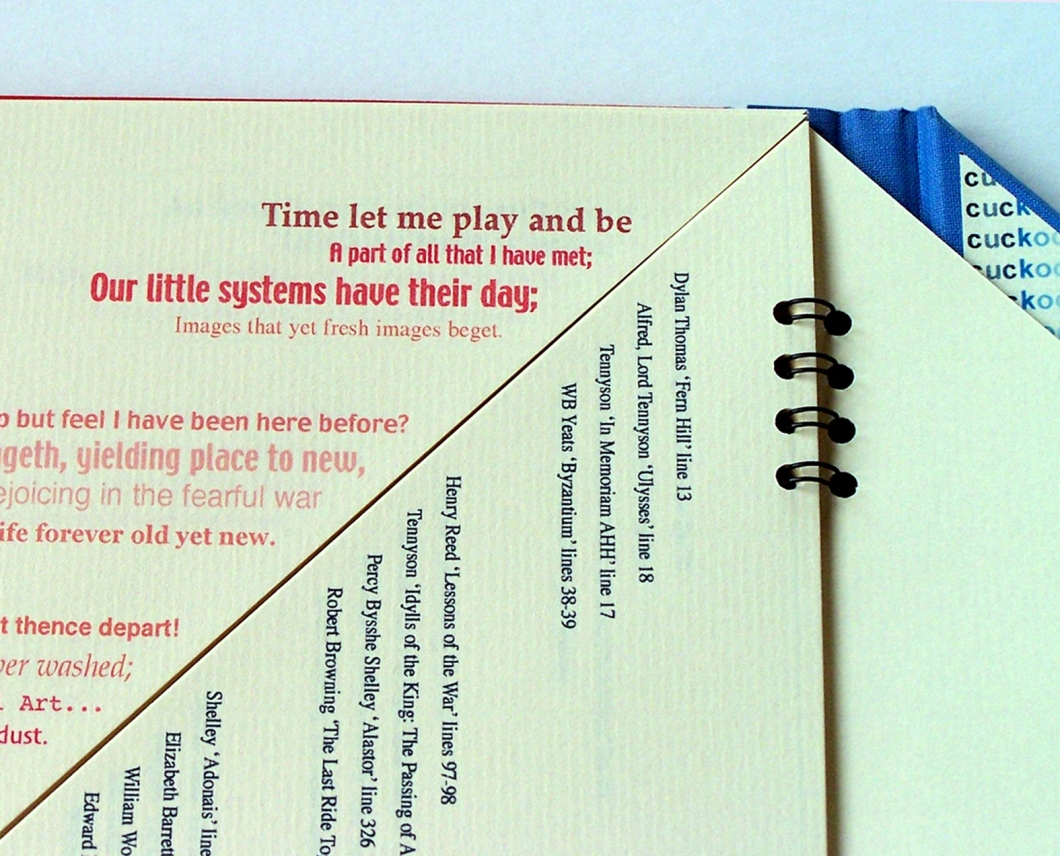
Several book artists discussed their work during the conference. Book artist Ross Birrell’s video ‘Dialogue with Marcel Duchamp’, in which he cuts in half and grates books on Duchamp, literally framed the conference as they were placed in angles behind the speakers. Birrell discussed several of his works focusing on book destruction. Amongst others he burned the complete works of Kafka, to reflect on the question whether burning Kafka is fairer to Kafka’s original wish.
Book artist Nicola Dale looked at the potential of book destruction and the book as an artist’s medium. Important in her work is that she sees her work not as destruction but as a transformation of books. As she reflected on her work ‘Cuckoo Song’, she explains how the work is about shifting knowledge in time and space and how it challenges questions of originality, authorship and repetition. As she states in her website about this work: ‘I read a large amount of British poetry, with the themes of originality, repetition and authorship in mind. I systematically took note of any quotations from the poems which dealt with these themes, and used them to construct an original poem.’ She also describes the making of her work ‘Down’, consisting of thousands of paper feathers made by hand from old maps. The work ‘A secret heliotropism’ is a reflection on Walter Benjamin, and on change in history.
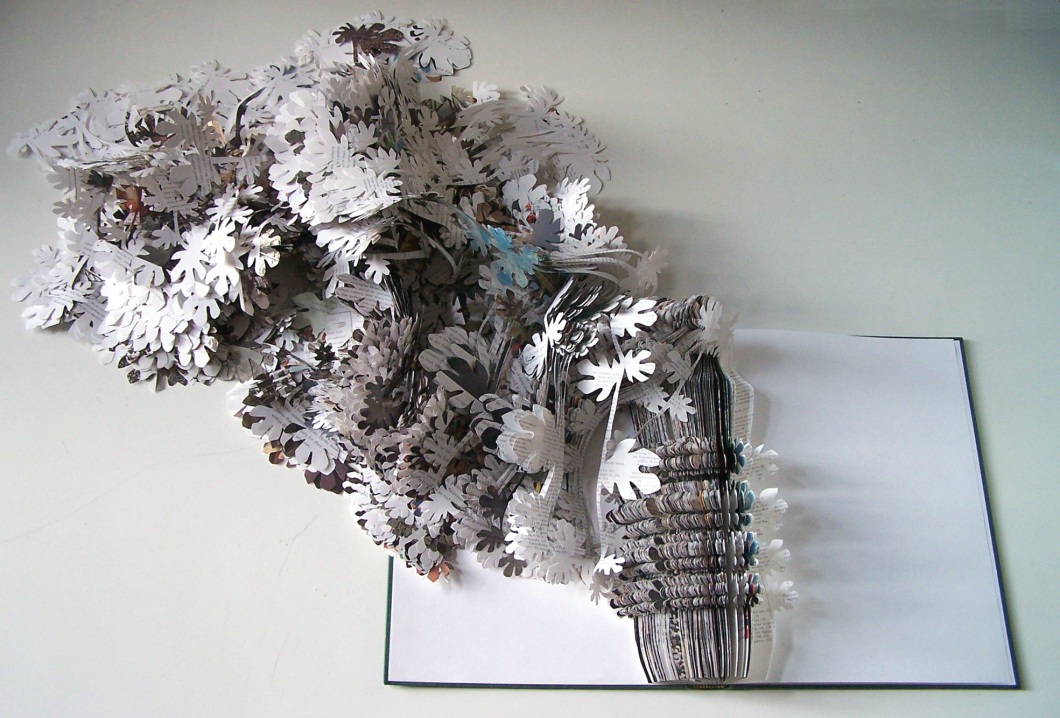
Bonnie Mak talked in her paper about how books are being destroyed as part of our continued digitization effort. Digitization also means the translation of material into a computer readable format. It remains unclear how this translation should be read. In the transition from codex to computer, Mak opts for viewing digitized books as palimpsests, erased and overwritten. One exists on top of the other, one is visible through the other. The digital reproduction is based on a relationship with the exemplar, the digitization and its exemplar occupy the same space. The digitization also shows how it imagines a manuscript. Within the digitization the idea of what a manuscript is, is embedded, and thus the digitization shapes the way the manuscript will be received and understood. Thus digitization leads to a reordering of classical texts and to how we understand the world as scholars. According to Mak we should be attentive to how these sources shape the past and the present. Digitized books are similar but different from their exemplars. Digital books can thus be seen as palimpsests of the present and the past. Mak stresses the fact that we should exploit digital resources while remaining critical of them.
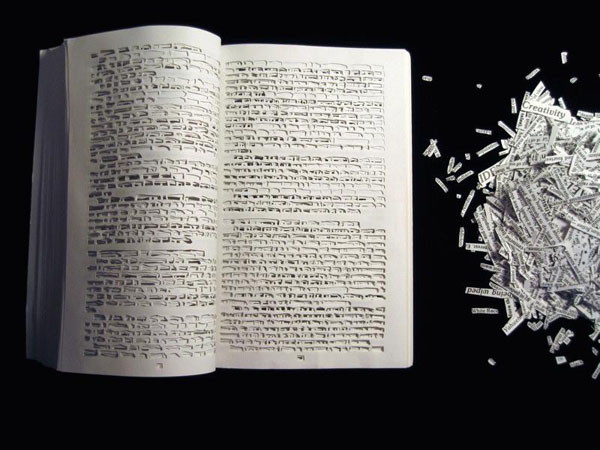
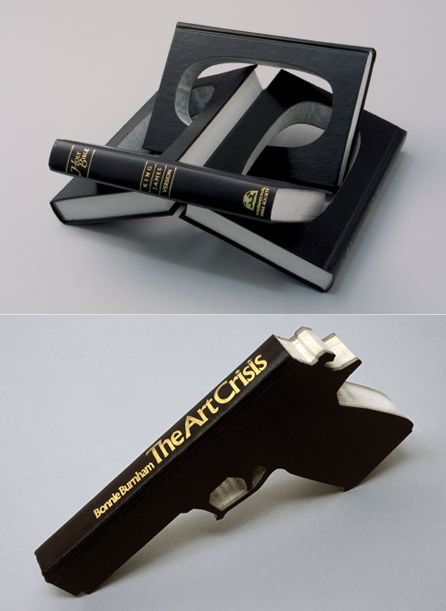
Brooke Palmieri talked about a different form of book destruction namely the disappearance of books within library archives. What happens if a book does not have an online library entrance? Palmieri calls this a silent form of destruction, a form of institutionalized destruction caused by cataloguing problems. The quiet destructiveness that haunts the archive is very much a historical property of the archive. The problem mainly occurs with entries that are hard to classify such as Robert Burtons’ commonplace notebooks: half print, half manuscript, which is a monster to classify. Palmieri shows how decisions made on an institutional level in this way leave their imprints on scholarship. She talks about two kinds of destruction in this manner: duplicates that get destroyed and books that librarians forget to archive. This shows that when a book enters a library it is not at all guaranteed a life of rest. Even more, its nature seems very much malleable. Books get new call numbers, are replaced to different positions in the catalogue. The history of anomalies and distribution of books across libraries shows how librarians are an obstacle to the field, as they abide to cataloguing practices that do not know how to deal with anomalies and in which they keep re-shuffling the entries. Palmieri concludes that cataloguing standards are very much a product of historical circumstances.
Kate Flint, in her plenary talk ‘The aesthetics of book destruction’ reflects back on how a book destroyed can be a beautiful thing. Looking over several examples of book art she explores how these works raise important questions: what is lost when a book is destroyed and what possibilities arrive? What is the relationship between material form and content? Why do images of destroyed book have a certain emotional effect? Flint concludes that we should use the book to think about the future of the book. This includes questions of accessibility, archiving and preservation. These art books and book arts make us aware of a books materiality and the difference between a book and a text and of the reading experience of a book.
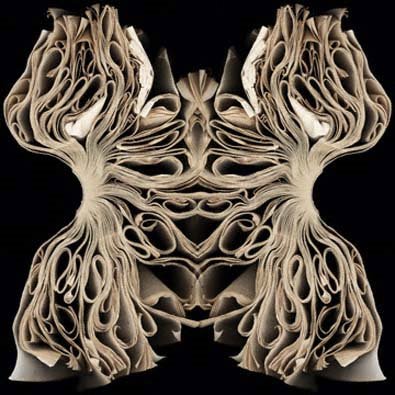
Amazing. What’s the YouTube source for the beautiful video at the end of the article? Thanks.
Hi Steve, you can find the YouTube video here: http://www.youtube.com/watch?v=rp5Zv-wDgtQ